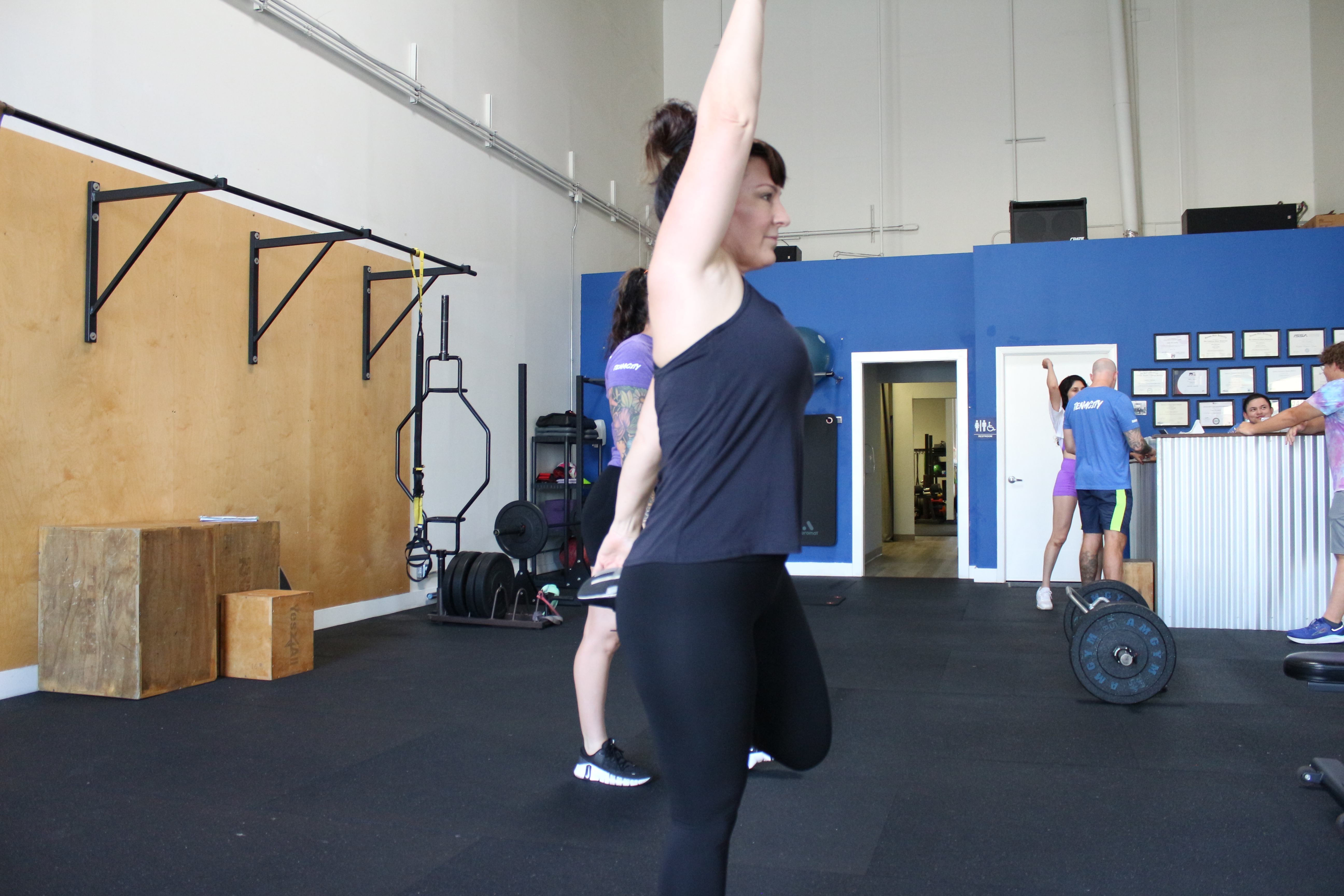“How’d you feel after the last workout?” I asked Thor, one of our long-time personal training clients, before beginning his first of two weekly training sessions. “I feel pretty good except for some knee pain I’m experiencing.” I looked at Thor with a gaze of concern as he continued sharing how his body reacted from our previous training session. “I think it was from the last three months of doing squats. Probably just the accumulation of doing all those squats throughout our training sessions made my knees cranky.”
I did my best to hold my composure as my heart increased by about thirty beats per minute, and a faint feeling came over me. “Just the accumulation of doing all those squats?” I thought. Why didn’t Thor tell us sooner that his knees were irritated? The last thing we ever want for our personal training clients is to report back any painful byproducts from their training experience under our guidance.
I followed up with Thor, “Have your knees been hurting for three months?” Thor nonchalantly replied, “Yup. Like three to four months.” After Thor added that a few months were“making his knees cranky” from the exercises we guided him through, my heart began to race more, and a sense of disappointment shrouded me. I stopped interviewing Thor about his feedback from the previous training session and went directly toward a higher-priority threat. Why wasn’t Thor telling us he was experiencing knee discomfort? Our job as lifetime fitness experts is to stave off pain for our exercise participants, not produce painful symptoms.
“Why didn’t you tell us sooner that your knees were hurting from the squats?” I asked Thor. “Well, no pain, no gain, right?” This time I visually squinted my eyes and pursed my lips in visually apparent disapproval of the subsequent statement. I responded, “Actually, we’re aiming toward quite the opposite.” I paused and put down my clipboard, “No pain should be a massive gain.”
Unfortunately, a stigma exists in our culture that pain and discomfort are attached to the thought of going to a gym, attending a small group fitness class, or hiring a personal trainer. A common reason potential exercise participants sign up for our services is to receive external motivation from us and position our coaching services as a drill instructor-type figure, to forcefully put them through rigorous exercise. In fact, during our initial consultations, when potential clients enter our fitness center for the first session, we ask them a very important discovery question, “What interests you in our personal training services?” The answer is sometimes, “I need you to whip me into shape.” When I hear this statement, my knee-jerk reaction is to tell them they need to enroll in basic training in their favorite military branch. The term “whip” really shouldn’t be used in any gym setting. And, while I am unquestionably grateful for the military services present in our society, fitness leaders aren’t drill instructors training soon-to-be soldiers for basic training.
It’s important to discover our lifetime fitness goals and demystify the image of embarking on a journey of strife and sheer anguish when entering a gym. If our goal is to lose weight, then seeking out the help of fitness professionals should include understanding concepts of exercises that increase awareness of cardiovascular fitness, injury prevention, strength training, and revisions to productive dietary habits. Refining the look and feel of one’s body should consist of a constructive approach to understanding that specific exercises target areas of the body meant to strengthen and reinforce the structural integrity of muscles. Most importantly, ingraining fitness as part of one’s life should be a gift, not a daunting task that inflicts undesirable sensations of psychological and emotional distress to the point in which permanent physical pain results from doing what a fitness coach tells you to do.
If we’re looking to utilize physical activity and exercise as a productive supporter of our everyday lives, perhaps we can view exercise sessions as more of a gift to empower our lives, instead of an undesirable punishment session, leaving one crawling out of the gym. Consistent exercise is meant to decrease excess fat mass, improve mobility and flexibility, and offer psychological and stress-reducing adaptations. Similar to how including vegetables in our diet to improve our immune system, exercise provides a benefit to our lives. However, would you like to have a bowl of brussel sprouts steamed to a lifeless husk after being in a steamer for an hour? Or, would you prefer a roasted brussel sprout that is well seasoned, crispy around the edges, yet soft and supple on the inside with a dash of balsamic reduction? We would probably choose the more gourmet delicious version of a beneficial cruciferous vegetable.
If exercise imposes psychological, emotional, or physical pain, then perhaps it’s time to reassess the purpose of the current type of exercise. After a few classes of performing barbell back squats ruins the next day because your back and knees are so inflamed you can’t pick up your grandkids, perhaps you should stop. There are modifications to exercise programs that can be applied to produce a more rewarding and desirable experience than “no pain, no gain.” Ensure to use exercise as a tool to produce an improved life by trusting your intuition on what the best exercises are for your future.
Sean McCawley, the founder and owner of Napa Tenacious Fitness in Napa, CA, welcomes questions and comments. Reach him at 707-287-2727, napatenacious@gmail.com, or visit the website napatenaciousfitness.com.

